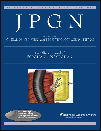Immunogenicity of Helicobacter pylori Urease B Protein and DNA Vaccines in a Mouse Model
This work was supported in part by an intramural grant from the Department of Pediatrics, Louisiana State University Health Sciences Center, and Children's Hospital, New Orleans, LA. Presented in part at the Pediatric Academic Societies' 2006 Annual Meeting, San Francisco, CA (abstract no. 751095) and Pediatric Academic Societies' 2007 Annual Meeting, Toronto, ON, Canada (abstract no. 752013).
ABSTRACT
A vaccine could alleviate major morbidity and mortality associated with Helicobacter pylori infection. We immunized BALB/c mice with 3 doses of a protein or DNA vaccine based on H pylori urease B. Protein alone was immunogenic even after the first dose, whereas DNA did not elicit antibodies after 3 doses. DNA preceding protein (D-P-P) appeared to blunt the response to protein, whereas DNA following protein (P-D-D) shifted from a predominantly T helper 2 (Th2) profile to a balanced Th1:Th2 profile. These preliminary findings may have important implications for the development of an H pylori vaccine.




